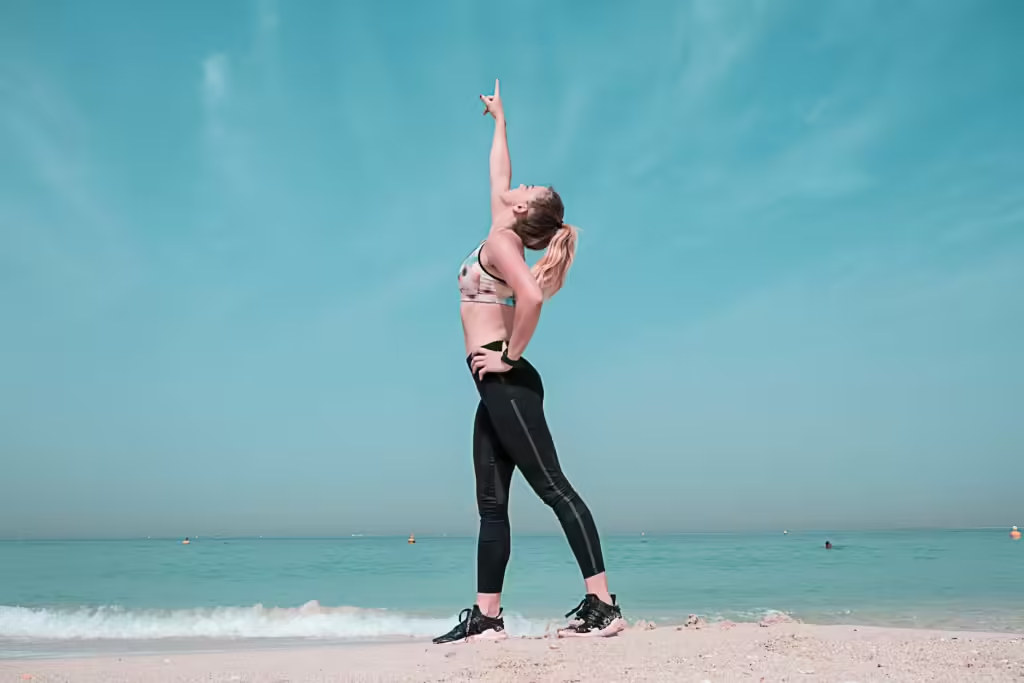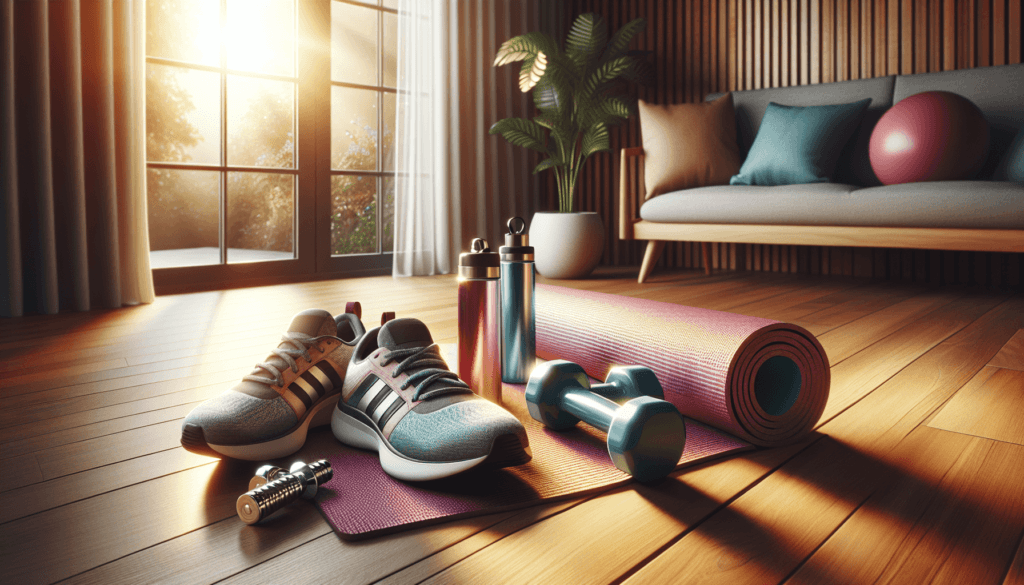Building a Balanced Workout Routine for Midlife:
Have you ever wondered how to optimize your workout routine to achieve vitality and wellness in midlife? As you navigate through this phase, maintaining your physical health becomes increasingly crucial. Developing a balanced workout regimen not only keeps you physically fit but also enhances your mental and emotional well-being. This article will guide you through creating an effective workout routine tailored for midlife.

This image is property of images.pexels.com.
Table of Contents
Overview
Entering midlife often brings about significant changes in your body and mind. These transitions call for a recalibrated approach to fitness that prioritizes balance, sustainability, and overall wellness. An effective midlife workout routine can mitigate the risks of chronic diseases, improve mobility, boost mental health, and enhance your quality of life.
Thesis Statement
Crafting a workout routine for midlife requires careful consideration of various factors such as physical limitations, personal preferences, and overall health goals. This article aims to provide you with a comprehensive guide to building a balanced workout routine that aligns with your needs and helps you achieve optimal vitality and wellness.
Historical Context
Historically, fitness regimens have evolved distinctively. From ancient Greece’s emphasis on physical prowess to the modern-day focus on a holistic approach to health, the definition of an effective workout has broadened. In ancient times, physical strength and endurance were paramount, reflecting societal values that prioritized warrior and athletic capabilities.
Today, the narrative has shifted significantly. There is an increased awareness of how fitness ties into aging well and maintaining a high quality of life. This shift underscores the importance of a balanced workout routine that incorporates various elements, from cardiovascular exercises and strength training to flexibility and mental well-being.
Current Trends
Recent trends highlight a growing focus on functional fitness and personalized workout plans, particularly for those in midlife. Here are some key developments shaping the current landscape:
- Functional Training: This type of exercise emphasizes movements that mimic everyday activities, improving overall functionality and reducing injury risks.
- High-Intensity Interval Training (HIIT): While not exclusive to younger populations, HIIT offers efficient workouts that can be adapted for different fitness levels and goals.
- Mind-Body Connection: Practices such as yoga and tai chi are gaining popularity for their dual benefits of physical fitness and mental relaxation.
- Technology Integration: Wearable fitness trackers and apps provide personalized insights that can enhance your workout routines, making them more effective and enjoyable.
Key Concepts and Definitions
To create a balanced workout routine for midlife, it is essential to understand the core components that should form your regimen. These include cardiovascular exercises, strength training, flexibility exercises, balance training, and mind-body activities. Here is a detailed breakdown:
Cardiovascular Exercises
Cardiovascular or aerobic exercises are activities that increase your heart rate and promote circulation. Examples include walking, jogging, cycling, swimming, and dancing. These exercises are crucial for improving heart health, enhancing endurance, and managing weight.
Examples:
- Walking: A low-impact exercise that can be easily incorporated into your daily routine.
- Cycling: Effective for both cardiovascular health and strengthening lower body muscles.
Strength Training
Strength or resistance training involves exercises that build muscle mass and strength. This is particularly important in midlife, as muscle mass naturally decreases with age. Incorporating resistance exercises helps maintain muscle tone, improve metabolism, and support joint health.
Examples:
- Weight Lifting: Using free weights or resistance machines to perform exercises like bicep curls and squats.
- Bodyweight Exercises: Push-ups, squats, and lunges that utilize your body weight for resistance.
Flexibility Exercises
Flexibility exercises help maintain the range of motion in your joints and reduce the risk of injuries. Regular stretching can alleviate stiffness and enhance overall mobility.
Examples:
- Static Stretching: Holding a stretch for a prolonged period to improve flexibility.
- Dynamic Stretching: Involves movement-based stretches that prepare muscles for activity.
Balance Training
Balance exercises are designed to improve stability and prevent falls, a common concern as you age. These exercises enhance the coordination between various muscle groups and improve proprioception (awareness of body position).
Examples:
- Standing on One Leg: Simple yet effective exercise to enhance balance.
- Tai Chi: A gentle practice that combines slow movements and deep breathing.
Mind-Body Activities
Mind-body activities, such as yoga and meditation, promote mental relaxation and emotional well-being. They also contribute to overall physical fitness by enhancing flexibility, balance, and muscle strength.
Examples:
- Yoga: Combines physical poses with breathing exercises and meditation.
- Pilates: Focuses on core strength, flexibility, and overall body conditioning.

This image is property of images.pexels.com.
Building Your Routine
Creating a balanced workout routine involves incorporating different types of exercises to ensure a comprehensive approach to fitness. Here is a step-by-step guide:
Step 1: Assess Your Fitness Level
Before starting any exercise routine, it is vital to assess your current fitness level. This can be done through self-assessment or with the help of a fitness professional. Understand your strengths, limitations, and areas that need improvement.
Step 2: Set Realistic Goals
Define what you seek to achieve with your workout routine. Goals can range from improving cardiovascular health, building muscle strength, enhancing flexibility, reducing stress, or maintaining a healthy weight. Make sure your goals are specific, measurable, achievable, relevant, and time-bound (SMART).
Step 3: Plan Your Weekly Schedule
Design a weekly schedule that incorporates various types of exercises. An example schedule might include:
Sample Weekly Workout Plan:
| Day | Exercise Type | Example Activities |
|---|---|---|
| Monday | Cardiovascular | Brisk Walking |
| Tuesday | Strength Training | Weight Lifting |
| Wednesday | Flexibility | Yoga or Stretching Routine |
| Thursday | Cardiovascular | Cycling |
| Friday | Strength Training | Bodyweight Exercises |
| Saturday | Balance Training | Tai Chi |
| Sunday | Rest or Light Activity | Leisure Walk, Meditation |
Step 4: Monitor and Adjust
Regularly evaluate your progress and make necessary adjustments to your routine. If you find that certain exercises are not effective or if you experience discomfort, modify your routine to better suit your needs.
Step 5: Stay Consistent
Consistency is key to achieving long-term benefits. Find activities you enjoy to foster a sustainable habit. Additionally, consider working out with a friend or joining a fitness group to stay motivated.
Example 1: Case Study
Consider the case of John, a 50-year-old man who decided to revamp his fitness routine. Initially, John struggled with weight gain, joint pain, and low energy levels. He consulted a fitness trainer who suggested a personalized workout plan incorporating a mix of cardiovascular, strength, flexibility, and balance exercises.
Implementation
John’s weekly routine included:
- Monday: 30-minute brisk walk
- Tuesday: Full-body strength training with resistance bands
- Wednesday: 45-minute yoga session
- Thursday: 20-minute cycling
- Friday: Core exercises and bodyweight training
- Saturday: Tai Chi class
- Sunday: Rest day with light stretching
Results
After three months, John experienced notable improvements. He lost weight, reported reduced joint pain, and felt more energized. The balanced approach allowed him to work on different aspects of his fitness, contributing to overall well-being.

This image is property of images.pexels.com.
Example 2: Different Perspectives
Now, let’s explore various viewpoints on midlife workouts:
Traditional Perspective
Traditionally, midlife fitness has been dominated by moderate-intensity aerobic activities and strength training. This perspective emphasizes the importance of cardio and strength exercises but often overlooks flexibility and balance training.
Holistic Perspective
A more holistic approach advocates for a balanced incorporation of all fitness components. This perspective values the integration of mind-body activities and functional training to address the comprehensive needs of midlife individuals.
Comparison Table: Traditional vs. Holistic Approach
| Aspect | Traditional Approach | Holistic Approach |
|---|---|---|
| Primary Focus | Cardiovascular and Strength | Balanced mix of all components |
| Flexibility Training | Limited | Integral Part of Routine |
| Balance Exercises | Often Neglected | Core Component |
| Mind-Body Connection | Often Overlooked | Highly Valued |
| Functional Training | Minimal | Emphasized |
Impact Assessment
A holistic and balanced workout routine can yield significant benefits in midlife. These include:
- Enhanced Physical Health: Reduced risk of chronic diseases, improved muscle mass, and better joint health.
- Mental Well-being: Reduced stress and anxiety, improved cognitive function, and better sleep quality.
- Emotional Stability: Increased sense of well-being and emotional resilience.
Conversely, neglecting flexibility, balance, or mind-body activities can lead to imbalances, increasing the risk of injuries and reducing the overall effectiveness of your fitness regimen.
Future Directions and Implications
Predictions
Future trends are likely to emphasize personalized fitness plans, leveraging technological advancements in wearable devices and AI-driven coaching. Virtual fitness classes and resilience training will also gain prominence, helping individuals adapt to physical and mental challenges.
Implications
For the fitness industry, this means a greater need for holistic and adaptive workout programs. Society will see improved health outcomes and reduced healthcare costs due to a more proactive approach in midlife fitness. As personalized plans become the norm, individuals will enjoy more tailored guidance, leading to better adherence and results.

Conclusion
To summarize today’s discussion, building a balanced workout routine for midlife involves integrating cardiovascular, strength, flexibility, balance, and mind-body exercises. This comprehensive approach ensures a well-rounded physical and mental wellness strategy that can enhance your quality of life significantly. What do you think about this holistic fitness approach?
Incorporating these insights into your routine can help you achieve optimal vitality and wellness. Explore other fitness-related topics on our site to further enhance your journey.

